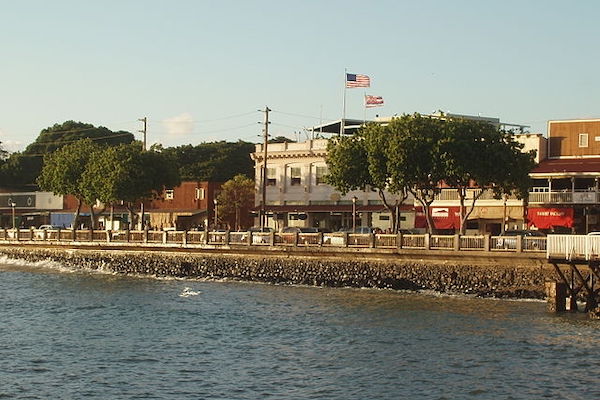Up next, we'll pass through Lahaina town. Now, Lahaina means cruel or merciless sun, which reflects the area's sunny climate and low rainfall. Before it became a popular tourist destination, this harbor town had a colorful and complex history.
Lahaina’s Royal Beginnings
For hundreds of years, Lahaina was a small fishing village. Prior to the arrival of foreigners, it also served as the traditional residence of Maui's royal family. But during the 1800s, Lahaina became a bustling center of commerce, culture, and conflict.
Beginning in the 1820s, Lahaina became the capital of the newly formed Hawaiian kingdom. It also served as a hub for the whaling industry. Whales were prized for their blubber, skin, teeth, baleen, and bones.
Whalers rendered blubber into oil, which served many purposes, mainly as fuel for lamps. And baleen was used to make things like umbrellas, buggy whips, and even corsets. Whaling brought economic opportunities and prosperity to Lahaina.
Whaling and Culture Clash
But it also brought trouble. Now, shortly after whaling ships arrived in Lahaina, Christian missionaries followed. And by then, Lahaina had become a rip-roaring, anything-goes frontier town.
The missionary's strict teachings clashed with both the traditional Hawaiian culture and the drinking and rabble-rousing of the whalers. Apparently, they were having a whale of a good time. The sailors quickly resented the missionaries for trying to stop all their fun, so they responded with violence, which prompted the royal governor to build Lahaina Fort on the waterfront in order to protect the town.
The 2023 Wildfire
Fast forward to the 1960s, when Lahaina had transformed from a whaling town into a tourist destination. Ever since, visitors have enjoyed this walking town, alive with history, charm, and beauty. That is, until August 8th, 2023.
The dry grassland outside the town caught fire, and winds from a passing hurricane drove that fire right into Lahaina. Within hours, this historic town was destroyed. Not a single warning siren went off, which left thousands of residents unaware of the fire, until it was too late.
Some of those residents actually took shelter in the ocean, and were forced to watch their homes slowly burn into hollow shells of rubble and ash. The fire burned over 2,100 acres of land, and destroyed or damaged over 2,200 buildings. Some of them were over 200 years old and had irreplaceable historic and cultural value.
The confirmed death toll sits at around 100 people, which is the most deaths from a U.S. wildfire in over a century. During the days and weeks that followed, debates erupted over the government's handling of the emergency. People understandably wanted to know who to blame.
But no matter what, no one can bring back the lives or the buildings that were lost that day. All that's left are the memories of what once was. But all was not lost.
Hope and Healing
Even though Lahaina was ravaged by the fire, the historic banyan tree in the center of town survived. And seeing the tree bloom again has given local residents the hope that like their beloved tree, Lahaina will also rise from the ashes. Make no mistake, the residents of Maui are resilient and strong, and they are not alone.
There has been an outpouring of love and support from Hawai'i and around the world, showing that the Aloha spirit is alive and well. If you'd like to help, please support local Maui businesses. Now is when they need your help most.
And lastly, as you pass through Lahaina, remember that people are still grieving the loss of their homes, their livelihoods, and their loved ones. Please show respect by not taking any pictures of the devastation. And be understanding when talking to locals.
It's a small island, so most people know someone who has been affected. And let's take a moment of silence for everyone lost in the fire, for the healing of those who survived, and for the hope of new things to come.
Want to visit Lahaina? Check out our West Maui Coastline Tour!








